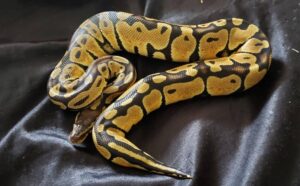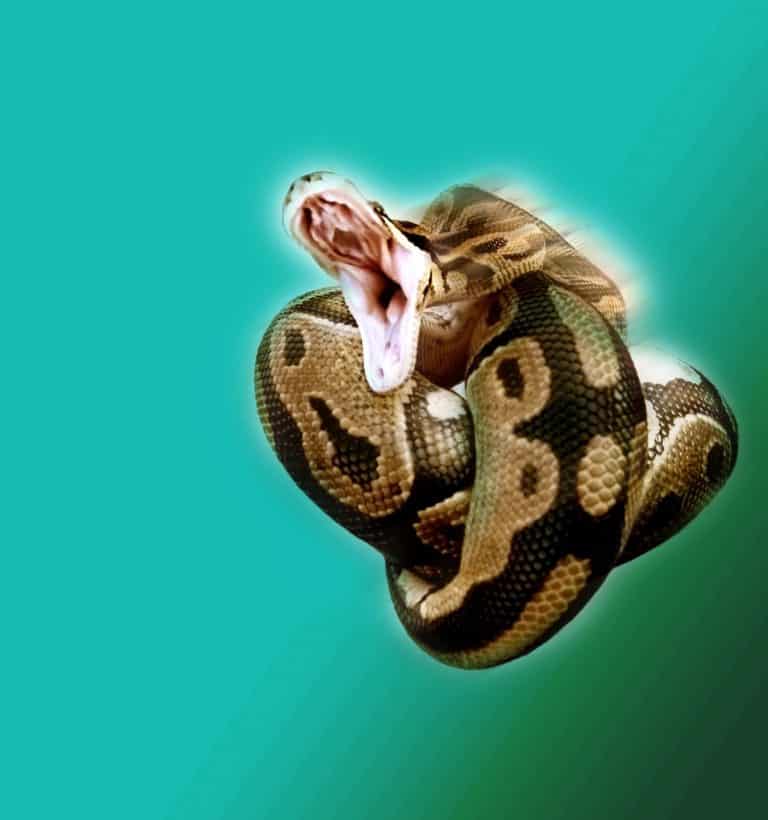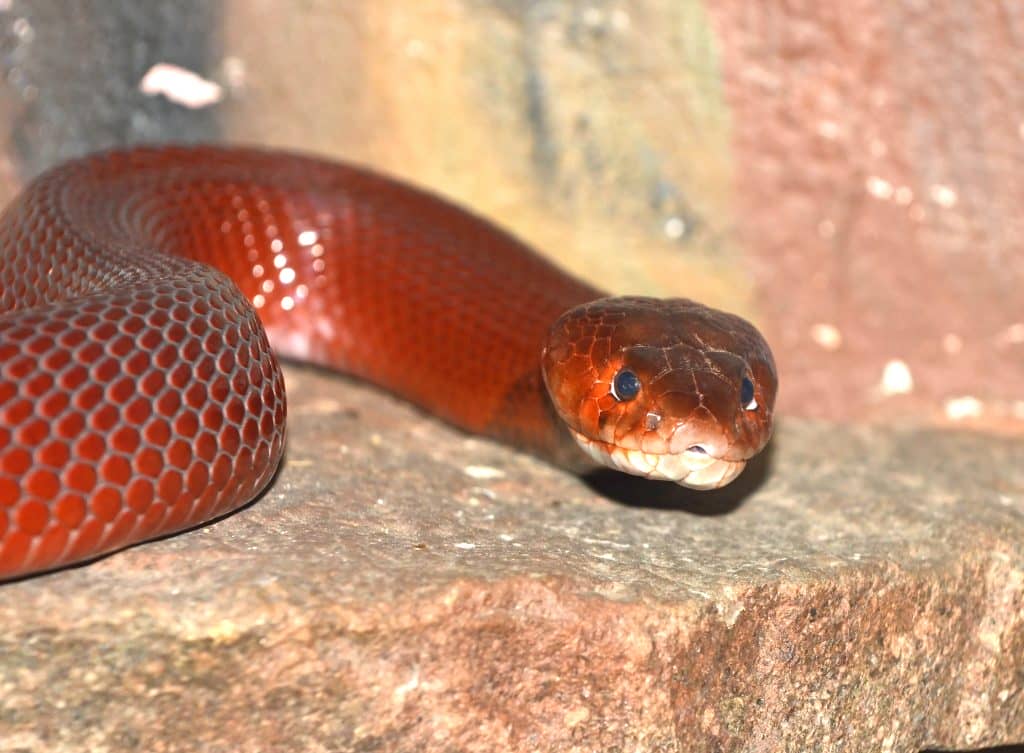What is a Ball Python?
Ball pythons, also known as Python regius, are one of the most common and beloved pet snakes in the reptile world. Native to West and Central Africa, these non-venomous constrictors are known for their docile nature and manageable size.
Why Are Ball Pythons Popular Pets?
They’re low-maintenance, non-aggressive, and don’t grow too large—typically maxing out around 3 to 5 feet. That’s one reason they’re often the first snake for beginner herpetologists. Plus, their calm demeanor makes them ideal for handling.
Do Ball Pythons Bite?
Are Ball Pythons Aggressive?
No, not at all. Ball pythons are considered one of the gentlest snakes in the pet trade. Biting is usually a last resort for them. If they feel threatened, they’d rather curl up into a ball—hence the name—than lash out.
When and Why Do They Bite?
Like any animal, they have their limits. Biting usually happens when they feel:
-
Threatened or startled
-
Stressed from poor environment
-
Confused during feeding
- Mishandled

What Does a Ball Python Bite Feel Like?
Description of the Bite Sensation
Imagine a pinch combined with tiny pinpricks. Ball pythons have dozens of small, sharp teeth that curve inward. When they bite, it feels like a fast jab followed by a mild scrape.
How Much Does It Hurt?
Honestly? Not that bad. Most bites feel like a mild cat scratch. It might sting and bleed a little, but it’s more surprising than painful.
Bite Comparisons (e.g., cat scratch, bee sting)
-
Cat scratch? Slightly less intense.
-
Bee sting? Less burning, more pressure.
-
Paper cut? Similar irritation, less shocking.
Common Reasons Ball Pythons Might Bite
Feeding Response
Sometimes your hand smells like a mouse, and your python mistakes you for lunch. Boom—feeding bite. Not personal, just instinct.
Stress or Fear
New environment, loud noises, rough handling—all stressful. A scared python might lash out to defend itself.
Improper Handling
Grabbing too quickly or from above (like a predator would) can trigger a defensive reaction.
Mistaking You for Food
Warm hands, rodent-scented fingers, or fast movements can confuse a snake’s feeding instinct.

How to Prevent Ball Python Bites
Reading Their Body Language
If your ball python is coiled tightly, hissing, or pulling back like a spring—back off. Those are red flags.
Proper Handling Techniques
Always approach from the side, move slowly, and support their body. Let them smell and explore before picking them up.
Avoiding Feeding Mistakes
Feed using tongs, not hands. Wait 48 hours after feeding before handling. Never handle during shedding or if they seem agitated.
What to Do If a Ball Python Bites You
Staying Calm
Don’t panic. Yanking your hand away can make things worse or injure the snake.
Releasing the Grip Safely
Ball pythons rarely latch on, but if they do, gently run cold water over their mouth or gently pry their jaws open—starting from the tail end of the mouth.
First Aid Steps
-
Wash the bite with soap and warm water.
-
Apply antiseptic.
-
Bandage if necessary.
-
Watch for signs of infection.
Are Ball Python Bites Dangerous?
Risk of Infection
Any open wound can get infected, but ball python bites are rarely serious. Clean the area well.
Allergic Reactions
Very rare, but possible. Seek help if you notice excessive swelling, trouble breathing, or a rash.
Medical Attention – When Is It Needed?
If the bite is deep, keeps bleeding, or gets red and swollen, head to the doctor. Better safe than sorry.
Do Baby Ball Pythons Bite More Often?
Baby vs. Adult Behavior
Yes, baby ball pythons can be a bit nippy. They’re more nervous and still learning the ropes of trust. Adults are usually more laid-back.
Handling Young Ball Pythons Safely
Go slow. Be gentle. Handle them regularly but not excessively. Give them time to adjust to you and their new home.
Myths About Ball Python Bites
“They’re Out to Attack!”
Totally false. Ball pythons don’t hunt humans. If they bite, it’s because they’re scared or confused—not bloodthirsty.
“All Snakes Are Dangerous”
Nope. Ball pythons are among the safest reptiles to own. They’re non-venomous, calm, and more likely to hide than bite.
Building Trust with Your Ball Python
Creating a Stress-Free Environment
Right temperature, humidity, and a cozy hide make a happy python. Less stress = less chance of biting.
Regular, Gentle Handling
Daily short sessions help build trust. Avoid sudden movements and give them time to explore your hands.
Knowing When to Leave Them Alone
If they’re shedding, digesting, or looking defensive—let them be. Respect their mood.
Best Practices for New Owners
Do’s and Don’ts of Ball Python Care
Do:
-
Handle gently
-
Feed with tongs
-
Learn their body language
Don’t:
-
Grab them suddenly
-
Handle right after feeding
-
Ignore warning signs
Tools That Help Avoid Bites
-
Feeding tongs
-
Snake hook for initial handling
-
Hand sanitizer (removes rodent scent)
Conclusion
Ball python bites? Not that big of a deal. They rarely bite, and when they do, it’s more of a surprise than a horror story. By understanding your snake, respecting its boundaries, and using proper handling techniques, you’ll likely never experience a bite. And if you do? Clean it up and carry on. It’s all part of the learning curve with these fascinating, friendly reptiles.
FAQs
Can Ball Pythons Draw Blood?
Yes, but only slightly. Their teeth can break the skin, but it’s usually minor.
Do They Bite During Shedding?
They might be more irritable and defensive during shedding, so it’s best to avoid handling during this time.
How Do I Tell If My Ball Python Is About to Bite?
Watch for coiling, hissing, a pulled-back head, and stiff body movements. These are clear signs.
Will They Bite Other Pets or Kids?
If provoked or mishandled, it’s possible. Always supervise interactions and teach kids how to handle gently.
Can a Ball Python Bite Be Fatal?
Absolutely not. They’re non-venomous, and their bite isn’t dangerous to humans.
Please don’t forget to leave a review.



